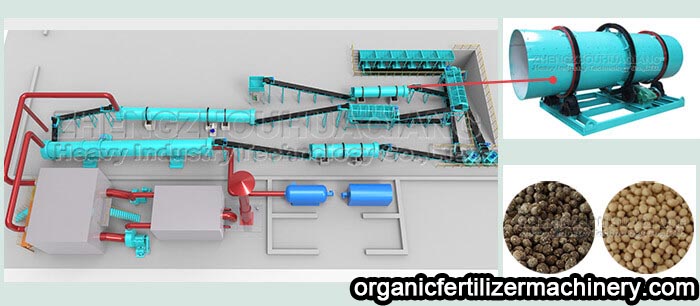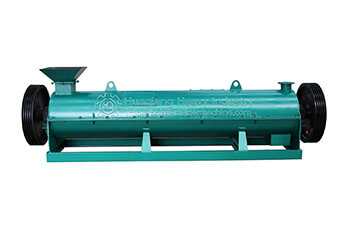What are the operation processes of bio organic fertilizer production
Operation method of bio organic fertilizer production
(1) The animal manure and auxiliary materials were mixed according to the weight ratio of 3:1, and then the treated RW agent was added into the fermentation broth, and then stirred, and then evenly stirred.
(2) The moisture content of the fermented product should be controlled at 50% – 65% to achieve the effect of holding into a ball and dispersing when the hand is released.
(3) The stirred fermentation material can be piled up for fermentation, with height no less than 1 m, width and length no less than 1.5 m.
(4) After 24-36 hours of fermentation, the temperature can reach above 50 ℃ and 70 ℃, and the deodorization effect can be achieved in three days.
(5) It can be used as base fertilizer and secondary fermentation if it is used as seedling fertilizer..jpg)
Bio organic fertilizer needs to be made into granules, mainly to produce the fermented powdered organic fertilizer into granules. This process requires more equipment, such as fertilizer mixer, fertilizer crusher, fertilizer granulator machine, drum dryer, drum cooler, screening machine, coating machine, packaging machine, etc.
Bio organic fertilizer production project has the advantages of short construction period, high output benefit, low risk and short payback period.
The bio organic fertilizer equipment among the organic fertilizer equipment has truly realized the development of agricultural cycle, which not only solves the problem of environmental pollution, but also uses renewable resources to turn waste into wealth. The organic fertilizer production line technology has planned to gradually promote the combination of clinker and chemical fertilizer, mainly with clinker supplemented by chemical fertilizer, and then slowly reduce the amount of chemical fertilizer, increase the amount of rotten biomass, and finally realize the use of only rotten organisms without or as little chemical fertilizer as possible, so as to realize the real circular agriculture, green agriculture and sustainable agriculture.
.jpg)


.jpg)




.jpg)